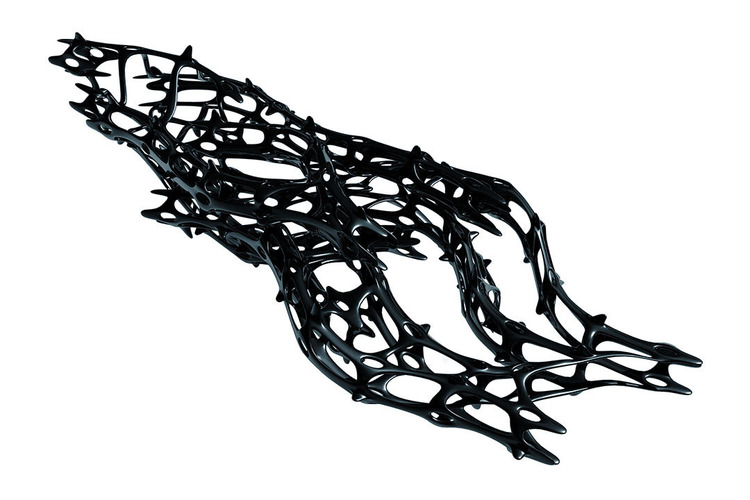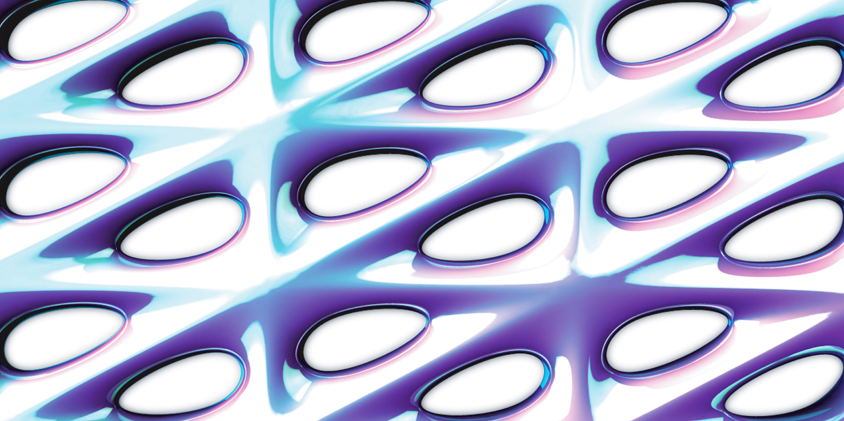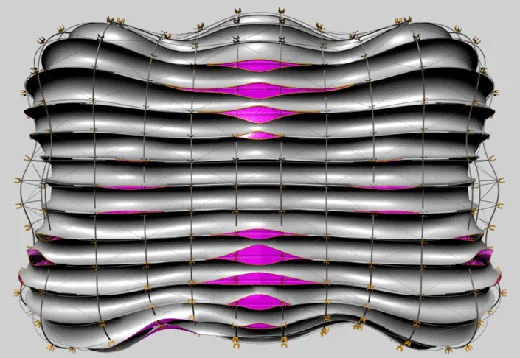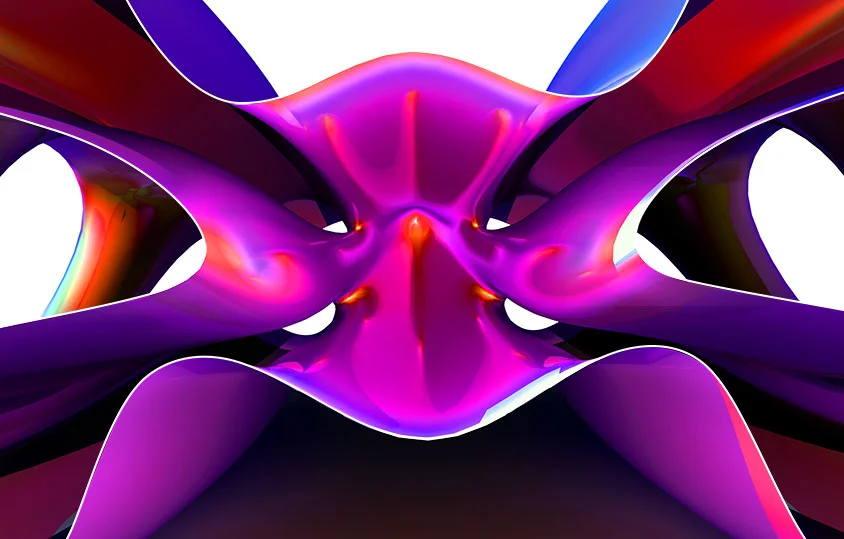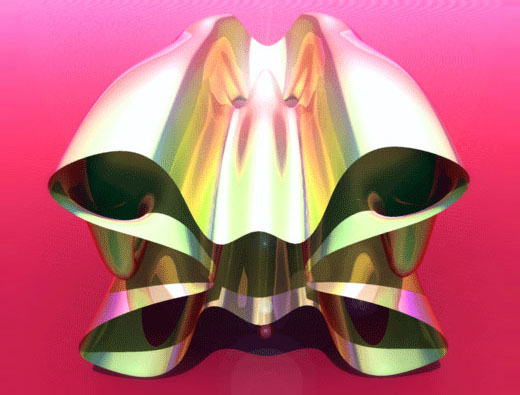I designed LGB in Hernan Diaz Alonso's studio at Columbia University in 2003. It is one of the earliest examples of the use of subdivision surface modeling in architecture and the first example of the single surface branching structure that has become an increasingly popular design technique.
Assembly
These proofsheets show various configurations of our chandelier during assembly.
Cloud Forest
A truly bizarre world of potentially affective refractions and bulbous forms.
Component 1
This is the first finished component of the chandelier I am designing with David Boira and Zoe Coombes. Only 31 more to make...
The Underbelly
This is where I imagine some of the seedier folks of London hanging around. It's kind of a cliche of how bridges are used, but seediness is one of the elements I was interested in preserving when re-conceiving the bridge.
Atmospheric Landscapes
The organization of this atmospheric landscape is based on dynamic simulations of flocking behavior that is injected with attractors to particular ideological flows. Essentially there is a desire in the flock to find certain organizations and to move in certain directions as influenced by a set of variables that consider ideas of site, agenda, space, and programmatic performance.
Pseudo Science
These are the opening stills from my midterm
presentation at the AA in London. I’m playing around with an idea of
pseudo science, both as a joke and as an excuse to use a 1950's textbook graphic style (as influenced by Damien Hirst's most recent publication).
Diagonal Mesh Topology
Albedo Study 02
Another light study on a more complex surface. The refractive capacity of the surface is getting to a pretty interesting point via the variation in the component organization.
Albedo Study 01
This animation shows the effect of light as it moves across the surfaces I'm developing.
DPMA High Resolution
Here are some better renderings of the high-refraction surfaces I'm developing.
DMPA Assembly
These diagrams show the minimal surface components I'm developing attaching via edge to edge connections.
Disruption Pattern Material via Albedo (DPMA)
I’m working towards a geometry that maximizes refraction and albedo to the point that it is subsumed by its own effects. This is the first surface experiment that seems to be getting close to what I’m after. Its based loosely on the connection technique of the Schwartz H surface and optimized based on techniques that maximize albedo and reflection.
Opacity and Refraction
I’m trying to figure out how to generate a combination of simulated and real reflections and at the same time produce surface depth. This image shows the interior skin of my project as it stands now. These channels (based on my fat studies) will be chromed and sit behind a curved glass skin, hopefully creating a double mirror effect.
Fat House
I had no idea that this is where I was going with my studio project, but at the moment I’m exploring the concept of fat within architecture. I’m trying to figure out how to produce a kind of cherub eroticism as opposed to something streamlined. Clearly the eroticism part is not there yet.
Perforated Surfaces
This is basic, but useful. While messing around in Maya, I kind of reverse engineered the manner that subdivisions can be attached to one another to create larger more complex topologies. By using the principles for aggregation in reverse, this technique allows you to create geometrically resolved perforated surfaces. The above image shows a simple case: Create a polygon surface, extrude all the faces in plane but with an offset, delete the new faces, and convert to a subdivision surface. This can be done selectively or in more complex scenarios to produce topologically singular perforated surfaces.
Nesting Forms and Fishnet Structure
Nested Forms
Fishnet Structure
I'm working on two complimentary strategies at the moment, nesting forms and fishnet structural systems. The idea is to produce more of a sensual relationship between the forms and then to wrap them with a revealing exoskeleton.
Form Study Refined
Orchid
More work for my Greg Lynn + Jeff Kipnis Studio...
Forms and Bodies and Colors
I’m trying to figure out some formal strategies for the house I am designing for the Greg Lynn + Jeff Kipnis studio I'm taking. At the moment I’m still fishing but there’s something about these that is working for me.
